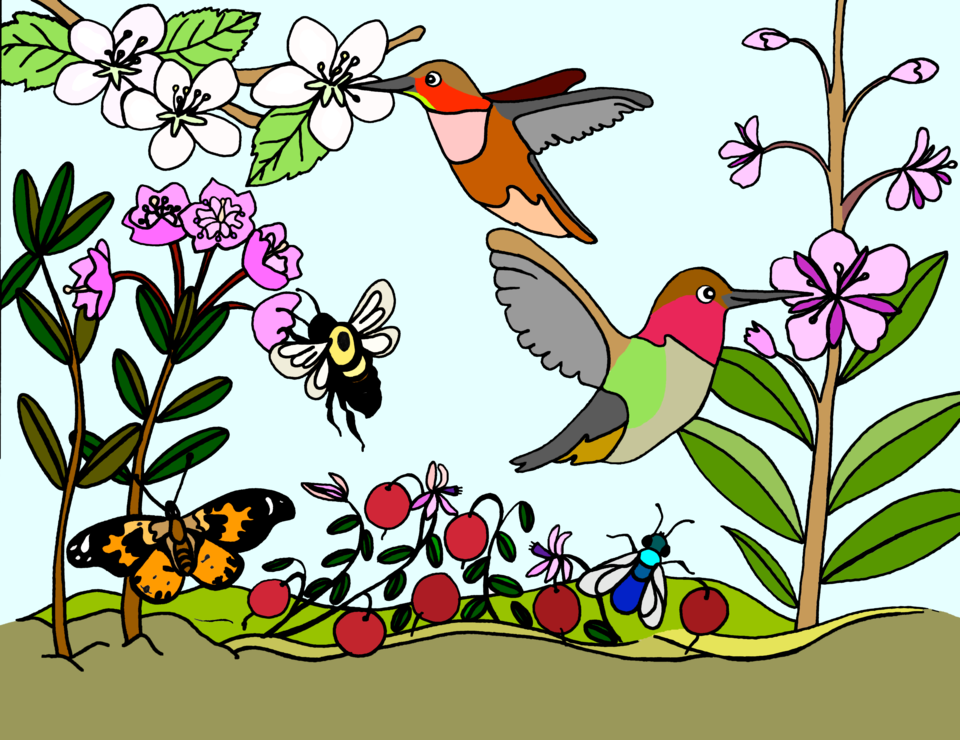The lively tableau, pictured, depicts pollinators with native plants in the Lulu Island Bog.
Native pollinators were active here long before Europeans brought honeybees to North America. In recent years, a disorder that wiped out many honeybee colonies has reminded us that diversity matters.
At top left in the tableau, with the Pacific crabapple blossoms, there’s a rufous hummingbird. It’s tiny, yet it migrates north from Mexico and back each year.
On the right, feeding from a fireweed flower, there’s an Anna’s hummingbird. It’s so hardy that it lives here all year round.
At bottom left, a painted lady butterfly is flying above the peat moss — sphagnum moss, the keystone species in the bog ecosystem. This kind of butterfly likes rain, but it, too, migrates to warmer climes in cooler weather.
Also at bottom, a blue orchard bee is almost hidden among the bog cranberries. Naturally, blue orchard bees are good at pollinating fruit flowers.
The bumblebee in the middle is gathering nectar from a bog laurel flower. Unlike the other native plants in the tableau, bog laurel has no traditional use for food, warmth or health care, but it serves bees well.
The Lulu Island Bog extends from Westminster Highway north to Alderbridge Way and from Garden City Road east to Jacombs Road. It’s two square kilometres of remnants of peat bogs that once covered nearly half the island.
The City of Richmond also calls the Lulu Island Bog the Central Wetlands. That’s fitting, since it keeps losing ground to “succession,” becoming bog forest and fen (wetland with a different ecosystem).
The gradual loss makes the surviving peat bog more precious — worth restoring and enhancing. To help show and conserve its values, the Lulu Island Bog has an interpretive centre, the Nature House, in the Richmond Nature Park.
Each April, there’s a “Hummingbird Homecoming” event in the park. In summer, the fen in the southwest corner of the wetlands is abuzz with native bees.
People picked up hundreds of Lulu Island Bog colouring sheets like the pollinator tableau (as line art) from the Garden City Conservation booth at the Salmon Festival. As well, you can download them from my “Natural legacies versus waste” blog.
Tableaus condense natural scenes, and this one uses a cartoon style. Still, artist Suzanna Wright and ecology advisor Michael Wolfe, who are teachers, kept it true to life.
Jim Wright is a member of the Garden City Conservation Society.



